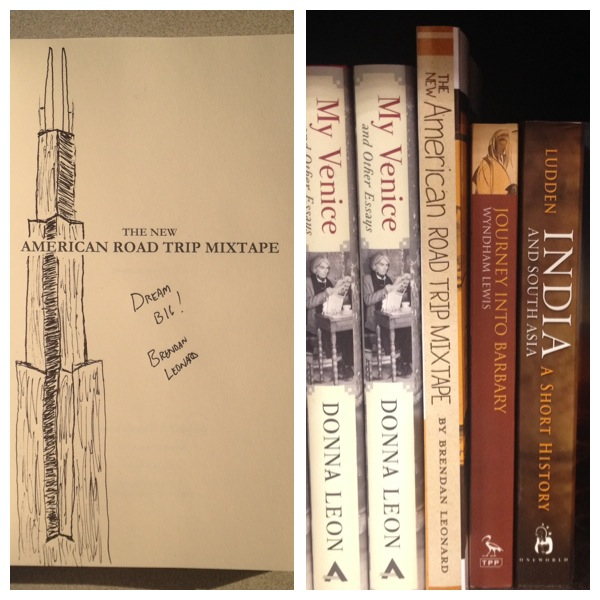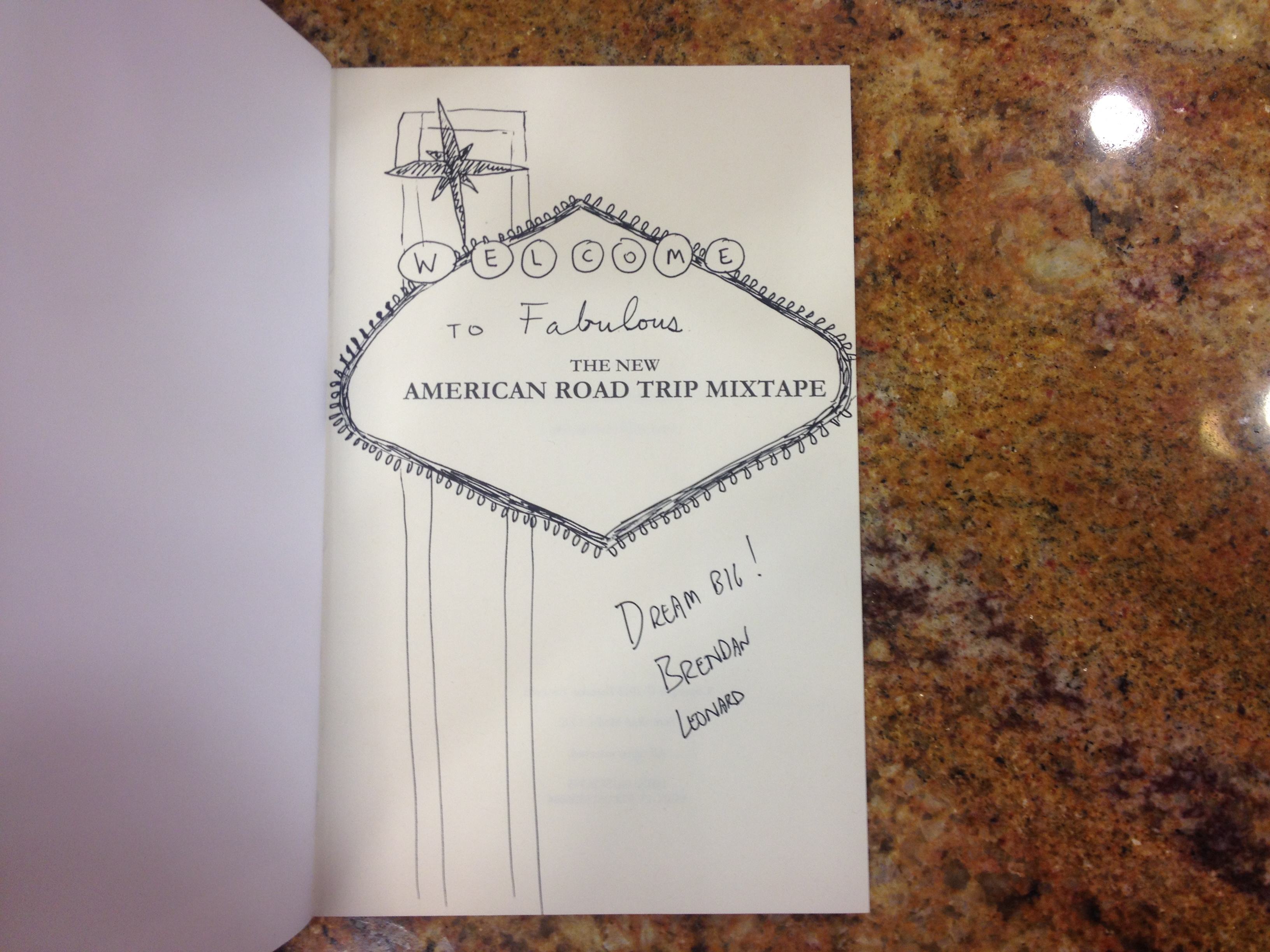When I self-published my book, The New American Road Trip Mixtape, in December, I knew there was pretty much zero chance bookstores would sell it. I was a relative nobody (beyond a blog that gets a million-plus page views per year), I had a not-so-unique storyline (young writer goes on road trip to find new American Dream), and, of course, no one reputable (or even disreputable) had published the book. So the marketing strategy was a big blank.
People would only see it online, through social media channels. No one was going to see it on the shelf in a store, flip it over, read the cover blurb, and buy it. Or could they? I had one idea.
"I'm just going to shove copies of the book onto the shelves at Barnes & Noble," I told a friend. Maybe I could mail five or so copies to friends who wanted to help/engage in a little mischief, and they could plant the books in their city's bookstores.
I told myself at the beginning that making money off the book wasn't important; reaching people who needed the story was the most important thing. So why not give a few copies away, or "donate" inventory to Barnes & Noble? That's not illegal, is it? I mean, you can't walk in and take a book off the shelf and put it in your jacket and walk out -- but there's no law that says you can't walk into the store with a book in your jacket and put it on the shelf, is there? Nah. It was a genius strategy, I thought, congratulating myself.
In his book Super Rich, Russell Simmons reminisced about a brilliant idea he'd had in 1978, in the early days of hip-hop, before anyone knew what hip-hop was. Friends of his had spent their life savings making a single called "Christmas Rappin'" with a then-unknown MC named Kurtis Blow, and they asked Simmons for help creating buzz for the record. Simmons ran around New York handing it out to club DJs, begging them to play the song. As the buzz began to build, they started pressing new versions of the record with a (fake) order number from Polygram Records. As DJs played the song more and more, they hype grew, and record stores began to call Polygram to order more copies of the song. Polygram was of course confused, but eventually got enough calls that they figured out how to track down Kurtis Blow and sign him to a record deal.
I cackled to myself. Like Russell Simmons, I would give it away until they wanted to pay for it. Genius!
"How are people going to get the books out of the stores, though?" my friend asked. "They can't just walk out with your book under their arm."
Oh.
I ran the idea by a few more people, and someone who had previously worked at a Barnes & Noble confidently said that as long as a book has a bar code with an ISBN number, it will scan at the register. I decided to test it. In Flagstaff, Arizona, I sneaked a copy of my book onto a shelf in the Travel section. Two hours later, my girlfriend walked into the store, grabbed a magazine and the copy of my book and went to the register to pay. I sat in the coffee bar waiting.

"It rang up," she announced back at the table. "Twelve dollars." I pumped my fist and laughed. It worked. As a business idea, it was terrible, of course: I'd just donated one of my author copies (about $5 worth of inventory) and given Barnes & Noble $12. But as a marketing investment, I had an idea. Another friend had told me about comedian Jim Gaffigan's Instagram account, and how he would pick up copies of his book at airport bookstores, sign them, and post the photos on Instagram so fans could find them and buy them. Cool, but Jim Gaffigan has 75,000 Instagram followers. I have 2,000. But what did I have to lose? Just revenue and some inventory.
In Tempe, Arizona, I drew a saguaro cactus on the cover page, took a photo of it, and nervously walked in to the Barnes & Noble on Rio Salado with the book under my arm. I searched for the Travel Essays shelf, trying to act normal. I had flashbacks to my handful of teenage shoplifting experiences, then laughed at myself. I slipped the copy onto the shelf in its proper alphabetical place, between Donna Leon's My Venice and Other Essays and Peter Mayle's French Lessons. I snapped another photo of the book on the shelf. I posted it on Instagram from the parking lot. 186 likes.
I planted another one in Flagstaff, this one with a drawing of a train on it. Then Las Vegas, with a drawing of the Welcome To Las Vegas sign. I started having fun with the drawings on the cover page. At breakfast with a friend, I mentioned that I figured at some point Barnes & Noble would find out about it and ask me to stop doing it. He asked, "Why?"

I said, imagine if every self-published author started shoving their books onto the shelves at Barnes & Noble -- what a mess that would be. He said,
"They wouldn't do that. People want to sell books, not give them away. Especially to Barnes & Noble." Indeed.
I drew the Sears Tower on the one I dropped in downtown Chicago, wondering if the security guard saw me. I bought a magazine to make myself look less suspicious. I dropped one on the Upper West Side in Manhattan, then as I was slipping the special "I
I dropped one in Portland, and another in Seattle, which, according to Instagram comments, was gone less than two hours after I put it there. In every store, I find the Travel Essays section, eyeball it for Donna Leon's book, then slide mine in next to it. I got out colored markers and drew the old Denver Nuggets logo on the one I dropped in downtown Denver, and it disappeared two hours after my Instagram post.
Last week, I drew a series of Colorado flags on four copies of the book, then drove around the city and put them on the shelves at four different Barnes & Noble stores. Three of the four were purchased by the end of the day, and I'm not sure about the fourth.

The New American Road Trip Mixtape has been on sale for five months, and it's sold more than 3,000 copies in paperback and ebook formats, mostly online, including Barnes & Noble's website, though not on their shelves. They haven't yet asked me to stop desecrating their shelves with my book, or notice, for that matter. But I wonder how the stores reconcile the $12 purchase of a book that's not in their inventory. A tiny part of me hopes, like in the Russell Simmons story, that they'll somehow start selling my book -- but a larger part of me thinks they'll probably more likely just send me a cease-and-desist letter. Which would also be kind of awesome, in its own way.